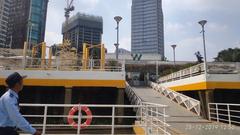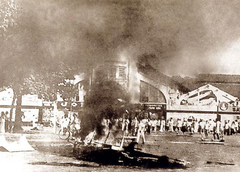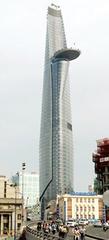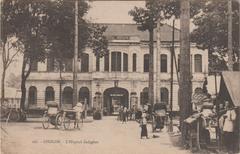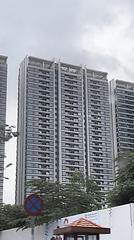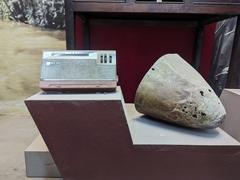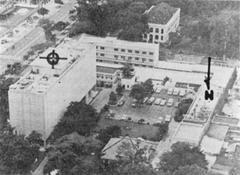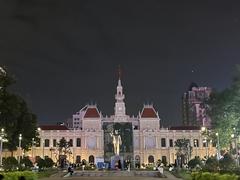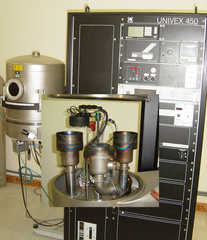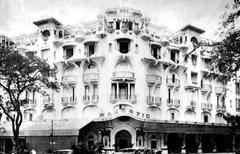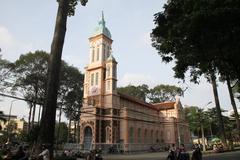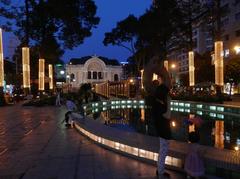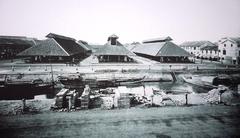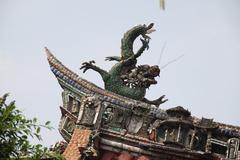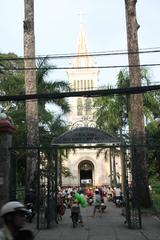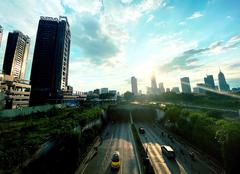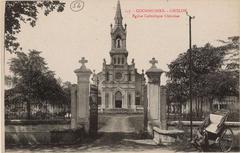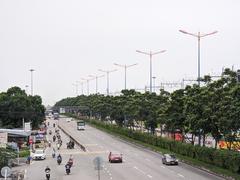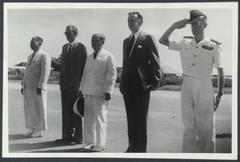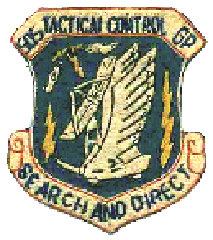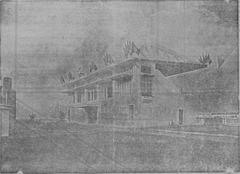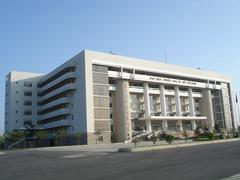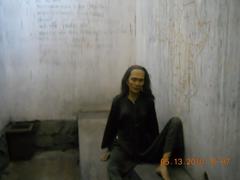
Visiting Hồ Con Rùa (Turtle Lake), Ho Chi Minh City: Complete Guide to Tickets, Hours, and Travel Tips
Date: 04/07/2025
Introduction
Hồ Con Rùa, or Turtle Lake, is one of Ho Chi Minh City’s most iconic and cherished public spaces. Located at the border of District 1 and District 3, this unique roundabout and urban square has evolved from a strategic citadel gate in the Nguyễn dynasty to a French colonial water tower, and finally to its current form as a modernist monument and vibrant social hub. Open 24/7 with free entry, Hồ Con Rùa is beloved for its lively street food culture, youthful energy, and proximity to major city landmarks. This comprehensive guide covers its rich history, cultural significance, practical visiting details, nearby attractions, and essential travel tips to ensure you make the most of your visit (Wikipedia; Saigoneer; BestPrice Travel).
Table of Contents
- Historical Overview
- Architectural and Cultural Significance
- Visitor Information
- Street Food & Social Life
- FAQs
- Visuals and Media
- Timeline of Key Developments
- Conclusion
- References
Historical Overview
Origins and Early History
The site of Hồ Con Rùa was originally home to the Khảm Khuyết Gate, a prominent entrance to the Bát Quái (Eight Trigrams) Citadel, constructed in 1790 under the Nguyễn dynasty. This citadel was later replaced by the smaller Phụng Citadel in 1837 after the Lê Văn Khôi rebellion. The area continued to serve as a strategic point during the early days of Saigon (Wikipedia; BestPrice Travel).
French Colonial Transformation
After the French conquest of Saigon in 1859, the citadel was demolished. The colonial administration began re-planning the city in 1862, using the grid of the old citadel as a blueprint for Saigon’s modern streets. The area around today’s Turtle Lake became a focal point for colonial power, with the first Governor’s Palace and other administrative buildings rising nearby (Nhạc Xưa).
The Water Tower Era (1878–1921)
In 1878, a large water tower was built at the site, serving as an important infrastructure project for the growing city. The tower was demolished in 1921, paving the way for the area to develop as a major intersection and urban node (BestPrice Travel; Mytour).
Construction of Hồ Con Rùa (1965–1974)
The modern Hồ Con Rùa was designed by architect Nguyễn Kỳ and constructed between 1965 and 1967, with enhancements completed by 1974. Its octagonal fountain, spiral walkways, and the five tall concrete columns (symbolizing open hands or lotus petals) became instant icons. Originally, a turtle monument stood at the center, supporting a commemorative stele listing nations that recognized the Republic of Vietnam. The monument’s unique symbolism and urban location made it a beloved gathering place (Wikipedia; Klook).
Post-1975 Changes and Notable Events
After the reunification of Vietnam in 1975, the inscriptions were removed and the turtle statue was destroyed in a bombing incident in the late 1970s. Despite these changes, Hồ Con Rùa remained a central landmark, its name and function deeply embedded in local memory. The area also became the site of the notorious “Vụ án Hồ Con Rùa” (Turtle Lake Case) in 1976, when an attempted bombing was foiled (Nhạc Xưa).
Architectural and Cultural Significance
Hồ Con Rùa’s modernist design blends geometric symbolism with spiritual elements. The five columns are interpreted as open hands, lotus petals, or even as a geomantic “nail” pinning down the city’s “dragon tail” for prosperity. The octagonal fountain and spiral walkways create a space that is both visually striking and functionally inclusive, inviting people to gather, stroll, and socialize (iVIVU).
The site is not only architecturally significant but also a symbol of Saigon’s resilience and adaptability, reflecting its layered history and dynamic urban culture (Mytour).
Visitor Information
Hồ Con Rùa Visiting Hours
- Open: 24 hours, seven days a week. No restricted hours.
- Best times: Early morning, late afternoon, and evenings for cooler temperatures and lively street scenes.
Ticket Information
- Entry: Completely free; no ticket required.
Accessibility
- Location: Công trường Quốc tế (International Square), District 3
- Access: Easily reachable by bus, taxi, ride-hailing apps (Grab, Xanh SM), or on foot from major landmarks like Notre Dame Cathedral and Independence Palace (Ahoy Vietnam).
- Parking: No official parking at the lake; use nearby lots such as Nhà Văn Hóa Thanh Niên (Youth Cultural House) (Xanh SM).
- Mobility: Wide walkways, but some stairs and uneven surfaces near the lake. Wheelchair users may need assistance in certain areas.
Nearby Attractions
- Notre-Dame Cathedral Basilica of Saigon
- Saigon Central Post Office
- Independence Palace
- War Remnants Museum
- Nguyen Hue Walking Street
- Diamond Plaza
All are within a 5–15 minute walk, making Hồ Con Rùa a perfect starting point for exploring the city’s historical core (Ahoy Vietnam).
Travel Tips
- Visit at sunset or in the evening for the best atmosphere and street food.
- Be mindful of your belongings, especially during busy hours.
- Use official parking or ride-hailing apps to avoid fines.
- For crossing busy streets, walk slowly and signal with your hand to blend with local traffic habits (Lonely Planet).
- Most cafes nearby offer free Wi-Fi and restroom access for customers.
Special Events and Guided Tours
- No official guided tours, but many city tours include Hồ Con Rùa as a stop.
- Occasional cultural events, especially during Tet and holidays.
- Street performances and musicians often gather on weekend evenings.
Street Food Culture and Gastronomic Diversity
Hồ Con Rùa is renowned for its street food scene, especially in the evenings. Local specialties include:
- Bánh tráng nướng (Vietnamese pizza)
- Bánh tráng trộn (rice paper salad)
- Bột chiên (fried rice flour cakes)
- Cá viên chiên (fried fish balls)
- Grilled bananas and corn
- Chè (Vietnamese desserts)
- Sugarcane juice
Most dishes are affordable, typically from 10,000 to 40,000 VND. The “ngồi bệt” (sitting on the pavement) culture fosters a sense of community and spontaneity (VinWonders).
Nearby, you’ll also find a variety of cafés, such as Highlands Coffee and Japanit Matcha & Coffee House, ideal for relaxing after a stroll (Xanh SM).
Frequently Asked Questions (FAQ)
What are the visiting hours of Hồ Con Rùa?
Open 24/7; busiest and most vibrant from late afternoon to late evening.
Is there any entrance fee or ticket required?
No; visiting Hồ Con Rùa is free.
Are there guided tours?
Not specifically for the site, but many city tours include it as a stop.
How do I get there?
Central location; easily reached by bus, taxi, ride-hailing, or on foot from major city landmarks.
Is it wheelchair accessible?
Most of the area is accessible, but there are some steps and uneven surfaces around the central monument.
What is the best time to visit?
Early morning for tranquility; evening for vibrant street food and social life.
What kind of food is available?
A wide variety of Vietnamese street snacks, desserts, and drinks.
Visuals and Media
Tip: For best photos, visit at sunset or in the evening when the fountain and monument are beautifully illuminated.
Timeline of Key Developments
- 1790: Bát Quái Citadel (including Khảm Khuyết Gate) constructed.
- 1837: Citadel replaced by Phụng Citadel.
- 1859: French raze citadel, begin urban planning.
- 1878: Water tower built.
- 1921: Tower demolished; site becomes a major intersection.
- 1965–1974: Modern Hồ Con Rùa constructed, including octagonal fountain and turtle monument.
- 1975: Reunification of Vietnam; monument inscriptions removed.
- 1976/1978: Turtle statue destroyed in bombing.
- Today: Hồ Con Rùa serves as a beloved social hub and urban landmark (Wikipedia; BestPrice Travel; Klook).
Conclusion
Hồ Con Rùa stands as a vibrant testament to Ho Chi Minh City’s layered history and urban spirit. Its evolution from a citadel gate to a beloved roundabout encapsulates the resilience and adaptability of Saigon. Today, it offers visitors a unique blend of history, architecture, food culture, and social life—all freely accessible at any time. With its central location, proximity to major attractions, and lively street scene, Hồ Con Rùa is a must-see destination for anyone looking to experience the authentic pulse of Ho Chi Minh City.
Call to Action:
For more travel guides, up-to-date information, and insider tips on Hồ Con Rùa and other Ho Chi Minh City highlights, download the Audiala app. Follow us on social media and subscribe to our newsletter for the latest updates and travel inspiration!
References and Further Reading
- Wikipedia - Hồ Con Rùa
- Saigoneer - From Vauban Citadel to Modernist Icon: The History of Hồ Con Rùa
- BestPrice Travel - Hồ Con Rùa Travel Guide
- iVIVU - Hồ Con Rùa: Things You Might Not Know
- Klook - Visiting Hồ Con Rùa: A Guide
- Mytour - Hồ Con Rùa Destination Guide
- Ahoy Vietnam
- Xanh SM
- The Smart Local
- Lonely Planet
- BDATrip
- VinWonders
- Phong Nha Explorer
- Travelsgcc
- Frontier Travel Vietnam
- When in Vietnam
- Nomadic Matt






